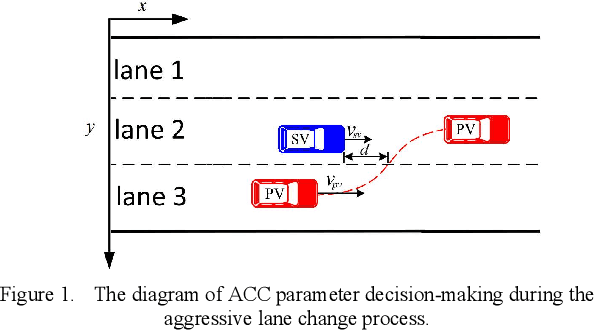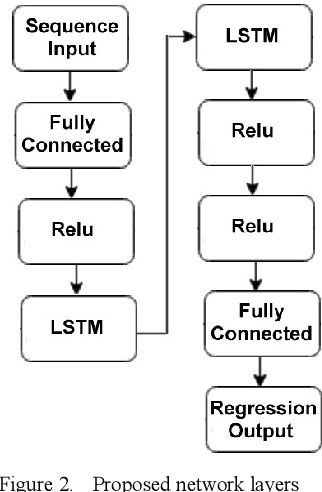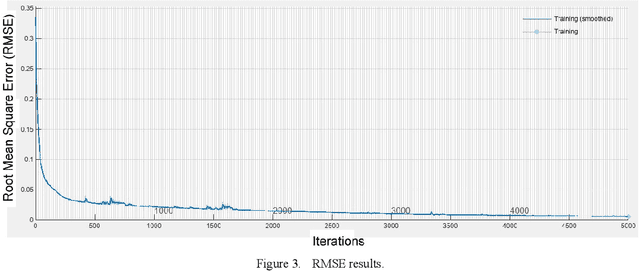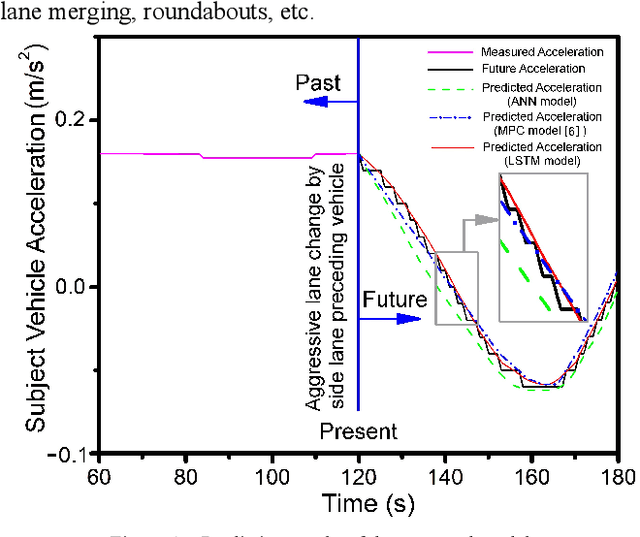Shahpour Alirezaee
Movement Optimization of Robotic Arms for Energy and Time Reduction using Evolutionary Algorithms
Jun 08, 2023Abstract:Trajectory optimization of a robot manipulator consists of both optimization of the robot movement as well as optimization of the robot end-effector path. This paper aims to find optimum movement parameters including movement type, speed, and acceleration to minimize robot energy. Trajectory optimization by minimizing the energy would increase the longevity of robotic manipulators. We utilized the particle swarm optimization method to find the movement parameters leading to minimum energy consumption. The effectiveness of the proposed method is demonstrated on different trajectories. Experimental results show that 49% efficiency was obtained using a UR5 robotic arm.
LSTM-based Preceding Vehicle Behaviour Prediction during Aggressive Lane Change for ACC Application
May 05, 2023



Abstract:The development of Adaptive Cruise Control (ACC) systems aims to enhance the safety and comfort of vehicles by automatically regulating the speed of the vehicle to ensure a safe gap from the preceding vehicle. However, conventional ACC systems are unable to adapt themselves to changing driving conditions and drivers' behavior. To address this limitation, we propose a Long Short-Term Memory (LSTM) based ACC system that can learn from past driving experiences and adapt and predict new situations in real time. The model is constructed based on the real-world highD dataset, acquired from German highways with the assistance of camera-equipped drones. We evaluated the ACC system under aggressive lane changes when the side lane preceding vehicle cut off, forcing the targeted driver to reduce speed. To this end, the proposed system was assessed on a simulated driving environment and compared with a feedforward Artificial Neural Network (ANN) model and Model Predictive Control (MPC) model. The results show that the LSTM-based system is 19.25% more accurate than the ANN model and 5.9% more accurate than the MPC model in terms of predicting future values of subject vehicle acceleration. The simulation is done in Matlab/Simulink environment.
A Novel Model for Driver Lane Change Prediction in Cooperative Adaptive Cruise Control Systems
May 01, 2023Abstract:Accurate lane change prediction can reduce potential accidents and contribute to higher road safety. Adaptive cruise control (ACC), lane departure avoidance (LDA), and lane keeping assistance (LKA) are some conventional modules in advanced driver assistance systems (ADAS). Thanks to vehicle-to-vehicle communication (V2V), vehicles can share traffic information with surrounding vehicles, enabling cooperative adaptive cruise control (CACC). While ACC relies on the vehicle's sensors to obtain the position and velocity of the leading vehicle, CACC also has access to the acceleration of multiple vehicles through V2V communication. This paper compares the type of information (position, velocity, acceleration) and the number of surrounding vehicles for driver lane change prediction. We trained an LSTM (Long Short-Term Memory) on the HighD dataset to predict lane change intention. Results indicate a significant improvement in accuracy with an increase in the number of surrounding vehicles and the information received from them. Specifically, the proposed model can predict the ego vehicle lane change with 59.15% and 92.43% accuracy in ACC and CACC scenarios, respectively.
 Add to Chrome
Add to Chrome Add to Firefox
Add to Firefox Add to Edge
Add to Edge